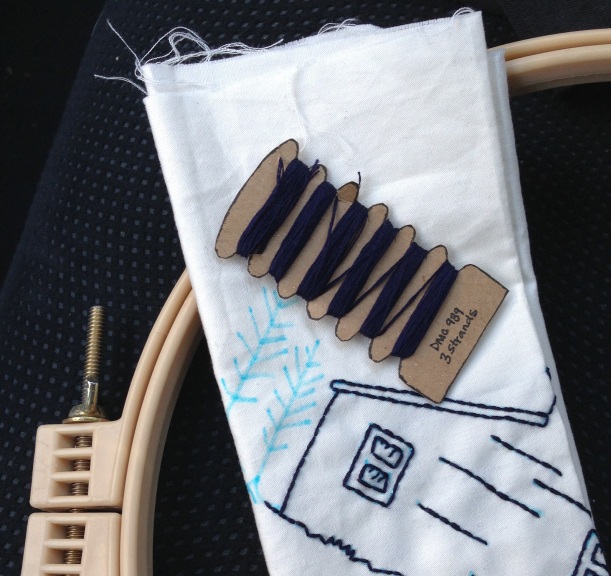As my blog name implies, if there is a project I can’t figure out on my own, I run to Google or Pinterest for help. I found lots of helpful tutorials for embroidery stitches online, including this series by Rocksea (links on the right).
Most tutorials do a great job of showing where the needle should go into and come out of the fabric by using an A-B-C method. I found it was a little difficult to follow for knots since knots are created by winding the floss around your needle, not by the order in which you pull the needle through the fabric. Photo tutorials can be difficult to see. I also found there is a lot more content about French knots than colonial knots. Here’s my tutorial, which I hope clarifies some of the questions I had when I first tried to make a colonial knot:
The descriptive version is:
From the embroidery piece, place the floss over your needle. Continue to pull it under the needle then back up toward the needle tip. Loop the floss around the tip of the needle. Put your needle back into your embroidery piece a few strands away from where the floss came out of the fabric. I like to pull the floss until the knot is up against the needle (instead of in the middle of the strand of floss), then press my thumb gently against the needle to prevent the knot from moving up the strand of floss. Otherwise, you can end up with a knot in your thread instead of where the knot is intended to be.
This is a photo of the floss placement:
This is what some finished knots look like:
Now that I am finished with my Gatsby embroidery (I’ve seen the movie, and thank goodness I still like the book!), I have been working again on my Barn Quilt. I used the full six strands for the Gatsby piece, but I am using only three strands for the Barn Quilt.
I was cutting an arm’s length of floss, separating it into two sets of three strands each, then using one set while trying not to tangle the other. I wished I had multiple, pre-separated strands ready to use. I saw this post on the PrettyByHand blog about some beautiful Lecien embroidery floss bobbins that hold 3+ skeins of floss and decided to recycle the idea for my Barn Quilt project. I cut a cardboard piece (it came with a fat quarter of fabric) into these simple cards/bobbins:
Each slot is smaller than a typical embroidery floss bobbin, both because there are fewer strands and because the length is much shorter. The cards have been working great so far!




